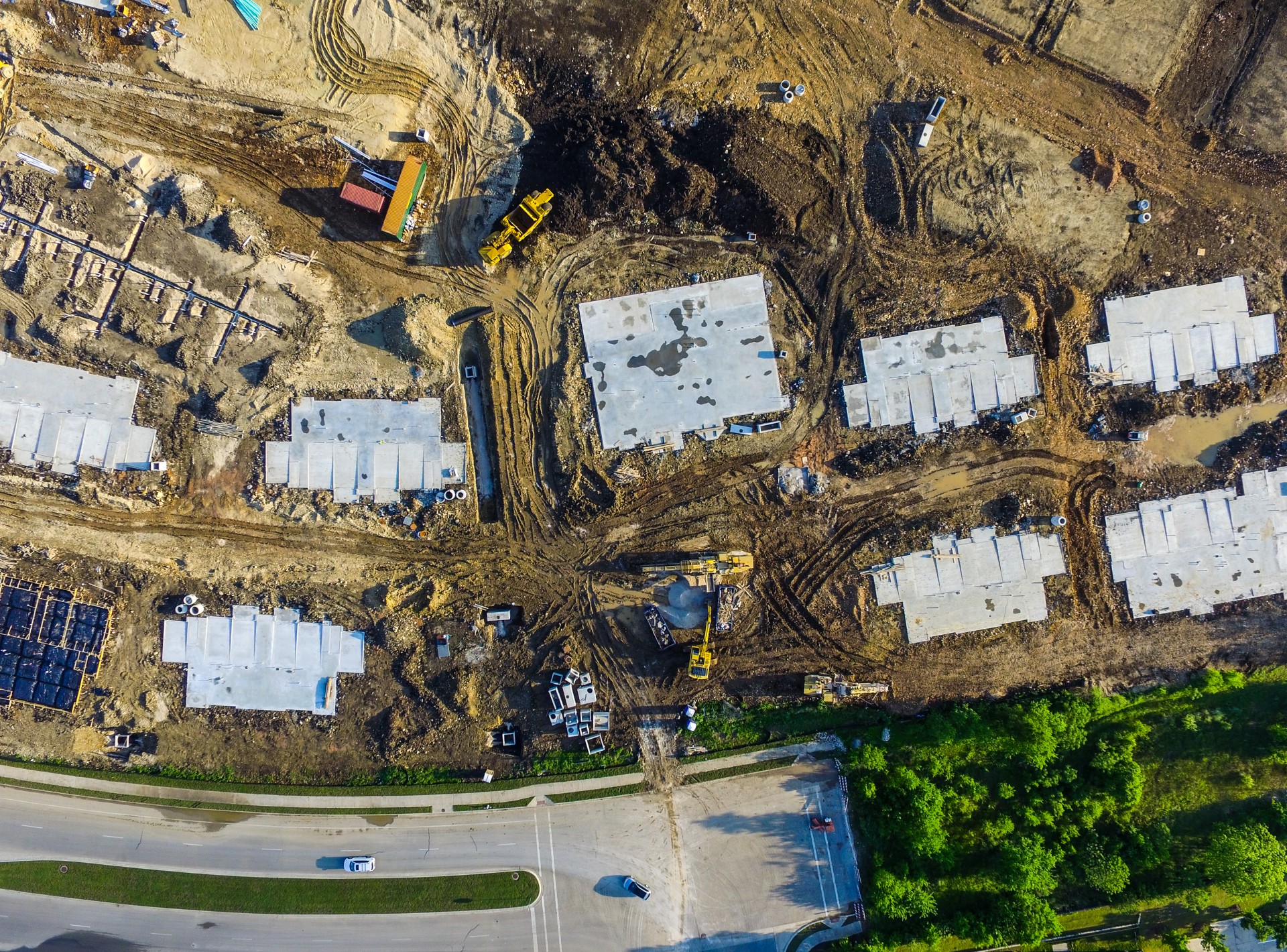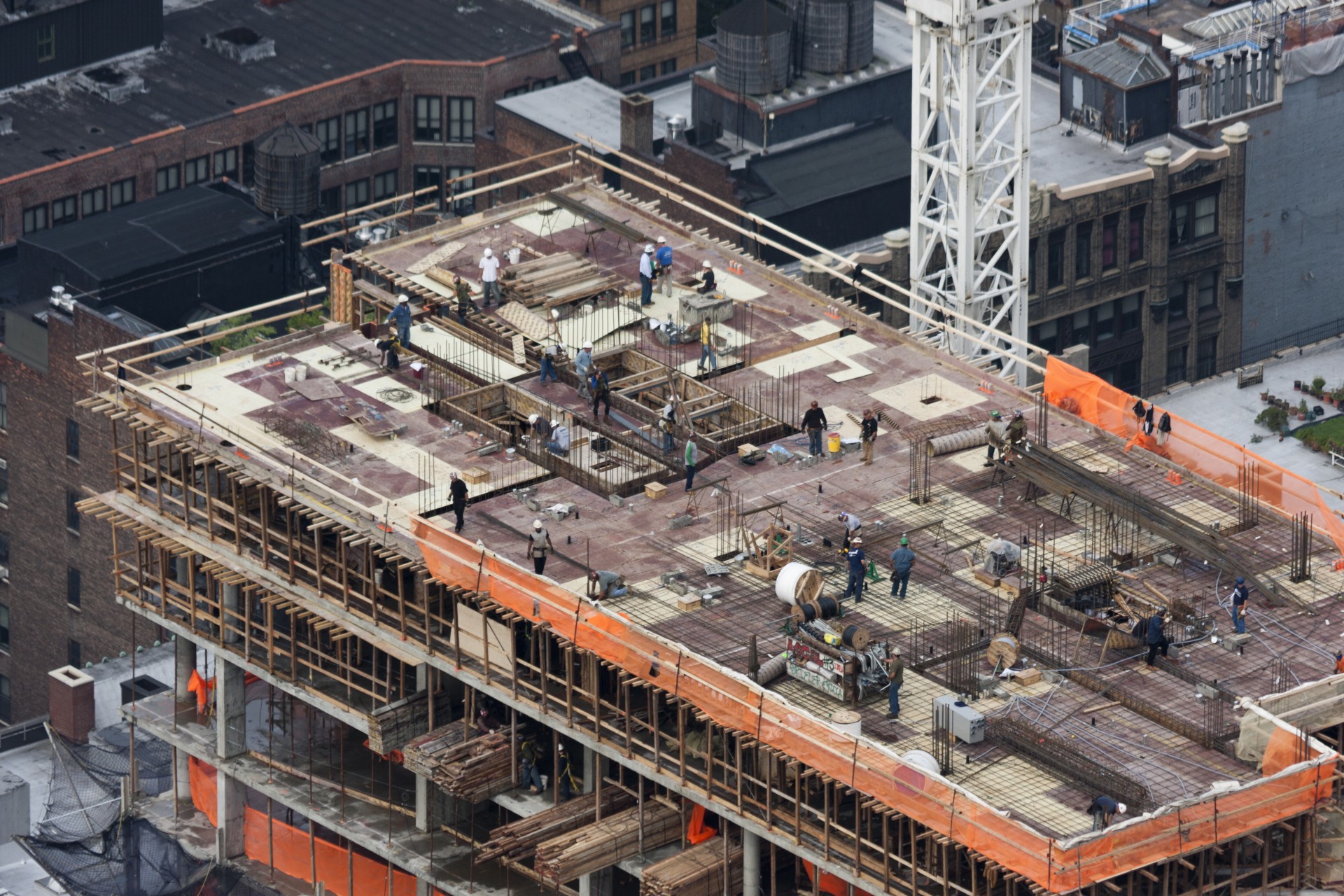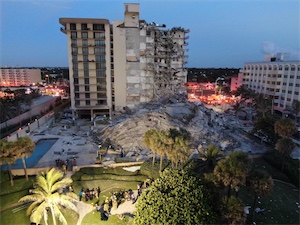First-Hand Observations and Recommendations for Assessing Other Structures Part 2
By: Janine M. Pardee, P.E. and Sidney T. Burns, P.E.

Photo: Miami-Dade Fire Rescue Dept.
Recommendations for Assessing Other Structures
1. How can structural deficiencies in mid-, and high-rise buildings be identified in the plan review process?
- Requiring detailed structural plans and specifications
- Requiring design calculations to be provided for review
- Qualitative review of structural plans by a registered professional engineer experienced in structural design to look for basic elements of design
- Are the correct codes and standards being applied?
- Are the column and beam numbers, size, and spacing adequate?
- Is reinforcing adequate?
- Are horizontal and vertical loads being appropriately transferred?
- Are essential details appropriately depicted?
2. Beyond the basic material testing documentation typically requested, how can structural deficiencies be identified during construction?
- Photograph (detail and overview) each joint with reference to column lines
- Photograph each concrete pour
- Require Contractor or third-party to prepare photographic logs of critical structural components
- Photograph walls containing structural elements, plumbing, and electrical systems before insulation and drywall
- Documentation of all critical construction joints and members as constructed
- Serves as an incentive to the Contractor and Subcontractor to ensure that work is performed in accordance with the design
- Turnover at end of construction will serve as evidence if a structural failure occurs
- Review of final Special and Threshold Inspection reports
3. What inspection and testing methodologies can be applied to confirm structural integrity?
- Special or Threshold Inspection on all smaller, mid-,
- and high-rise buildings
- Nondestructive inspection
- Ground Penetrating Radar to verify steel reinforcing bar locations
- Open drywall or block as needed to spot check structural elements
4. What current codes and standards govern building inspection and are they effective?
- ASTM E2018 - Very general guidance for structural assessment and does not require an assessment by an engineer, much less a registered professional engineer
- SEI/ASCE 11-99 Guideline for Structural Condition Assessment of Existing Buildings - Provides guidance only, leaving broad latitude for the engineer to develop the testing and inspection protocol and acceptance criteria
- Jurisdictional 40-year inspection programs
- Does not include a design review
- Does not include an as-built review
- Does not require specific qualifications of the inspector, but must be signed by a registered professional engineer
5. What changes are needed to building codes and standards to increase confidence in structural design?
- Changes to:
- Building codes (existing 8 - 25 load combinations are too many)
- ACI codes
- Need a national standard for periodic inspection of existing structures
- Inspection procedures
- Analysis criteria
- Acceptance criteria
- Determination of whether the structure is performing as intended
- Determination of whether the structure is safe to occupy
6. What actions should be taken on existing structures?
- Inspect buildings designed as concrete plate slab and column construction
- Inspect older structures with missing or minimal drawings and construction documents built without diligent inspection by licensed inspectors
- Inspect buildings placed in service before roughly 1986 when Florida Special or Threshold Inspection was implemented
- Request available:
- Plans and specifications
- Material testing documentation
- Prior inspection, testing, or repair reports
- Qualitative review of the above by a registered professional engineer experienced in structural design and inspection
- Where drawings and construction documents are lacking, additional requirements should be imposed including, but not limited to, creating as-built drawings, reverse engineering, and materials testing.
Curricula Vitarum
Janine M. Pardee, P.E. - Janine is a structural and mechanical engineer specializing in forensic engineering, structural design specialties, and ride and show engineering. She is highly experienced in building and mechanical design, catastrophic damage investigations, forensic analysis, Code compliance, and inspections. Janine received a Bachelor of Civil Engineering degree from Georgia Tech in 1976 and is a Florida registered Professional Engineer. She holds a 1980 Civil/Structural Engineering License, a 2002 Mechanical Engineering/Machine Design Engineering License, Florida State Certified General Contractor license (inactive), and is also licensed as a Certified Structural Masonry Inspector (FCPA), Florida Certified Ride Inspector, and Certified Diver. In addition to authoring several published articles and courses, She is an ASTM member and voting member on six ASTM Committees. She is an Affiliate of the National Association of Forensic Engineers (NAFE) and American Concrete Institute (ACI) Central Florida and holds memberships in the National Society of Safety Professionals, and the Florida Structural Engineers Association, where she serves on the Board of the Central Florida Chapter.
Sidney T. Burns, P.E. - Sid is a Principal of Due Diligence Associates, Inc., specializing in performing commercial property condition assessments and construction loan monitoring for lenders for commercial, retail, industrial, and multifamily developments, including low-income housing, market rate, and historic tax credit projects. Sid received a Bachelor of Civil Engineering degree from Georgia Tech in 1976 and is a Florida registered Professional Engineer. He has over twenty-five (25) years of experience performing hundreds of commercial property condition assessments, thousands of construction site visits, and preparation of hundreds of front-end analysis reports, including reports for Fannie Mae and Freddie Mac. His experience includes consulting on difficult projects such as structural failures (e.g., roofing collapse, foundation settlement), geotechnical issues (e.g., sinkholes, soil heave), and other forensic investigations by coordinating analysis with structural engineers, geologists, and other subject matter experts. Sid is a Board Certified Building Inspection Engineer and a member of the National Society of Professional Engineers, and the National Academy of Building Inspection Engineers, where he has served for ten years as Secretary, Treasurer,
and Board Member.



